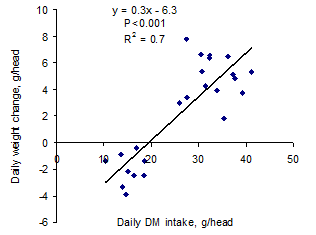

Figure 1: Average weight gain of local chickens fed different energy and protein feeds
Figure 2: Relationship between DM intake and live weight gain of chickens fed different sources of carbohydrate and protein
|
MEKARN Conference 2010 |
The experiment was carried out for 2 weeks with 240 local chickens at the age of 60 days (144 females and 96 males). The chicks were housed 10 per pen (4 males and 6 females). The experiment was a 4*2 factorial arrangement in a completely randomized design (CRD) with 3 replications. The chickens had free access to each of the carbohydrates (broken rice, cassava root, sweet potato tuber, and banana fruit) and each of two proteins feeds (soybean meal and duckweed). There were significant interactions for all measurements of feed intake and live weight change, which showed contrasting results according to whether the protein source was soybean meal or duckweed. On soybean meal the chickens gained live weight on all the carbohydrate sources, with the best result on broken rice, followed by sweet potato root and with the poorest growth on cassava root and banana fruit (Figure 1). In contrast, with duckweed as the protein source, the chickens lost weight on all the carbohydrate feeds other than broken rice for which the growth rate was the same as with soybean. The reason for the differences in live weight change appear to have been caused by differences in feed intake as live weight gain was linearly related (R2 = 0.7; P<0.001) with DM intake (Figure 2).
 |
 |
|
Figure 1: Average weight gain of local chickens fed different energy and protein feeds |
Figure 2: Relationship between DM intake and live weight gain of chickens fed different sources of carbohydrate and protein |
|
Table 1: Daily DM and CP intake and average weight gain of local chickens fed different energy and protein feeds |
|||||||||
|
|
Broken rice |
Cassava root |
Sweet potato tuber |
Banana fruit |
SEM/P |
||||
|
|
Duckweed |
Soybean |
Duckweed |
Soybean |
Duckweed |
Soybean |
Duckweed |
Soybean |
|
|
Daily DM intake, g/head |
|||||||||
|
27 |
26 |
13 |
17 |
9 |
11 |
13 |
7 |
1.2/** |
|
|
Protein feed |
5 |
8 |
5 |
19 |
4 |
25 |
3 |
23 |
1.6/*** |
|
Total |
32 |
34 |
18 |
36 |
13 |
36 |
16 |
30 |
2.0/*** |
|
CP intake, g/head |
|||||||||
|
Energy feed |
2.3 |
2.2 |
0.4 |
0.5 |
0.3 |
0.3 |
0.4 |
0.2 |
0.08/ns |
|
Protein feed |
1.4 |
4.3 |
1.4 |
9.7 |
1.1 |
13 |
0.7 |
11.4 |
0.8/*** |
|
Total |
3.7 |
6.5 |
1.8 |
10.3 |
1.3 |
13.1 |
1.1 |
11.6 |
0.8/*** |
|
DM intake, % of BW |
10.1 |
11.1 |
6.1 |
9.5 |
4.2 |
9.5 |
6.6 |
10.2 |
0.7/* |
|
CP, % in DM |
12 |
19 |
11 |
28 |
11 |
37 |
7 |
40 |
1.1/*** |
|
ADG, g/day |
6.2 |
6 |
-2.04 |
3.8 |
-1.9 |
5.5 |
-2.3 |
3.4 |
0.8/*** |
|
* p<0.05, ** p<0.01, *** p<0.001 |
|||||||||